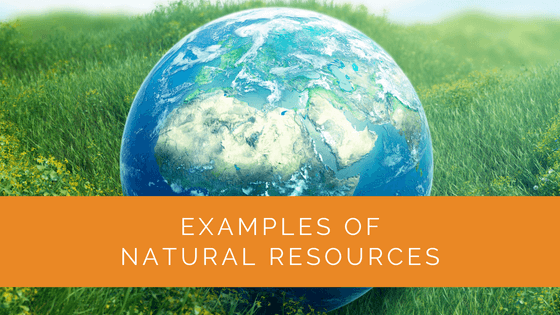Our home planet, Earth, is the third planet in the solar system and the only one known to inhabit living things. It features a hospitable temperature and a mix of chemicals that have helped life prosper.
Earth is also the only planet covered in liquid water, as the temperature allows the water to exist for prolonged periods. This vast ocean further provided a convenient place for life to begin billions of years ago.
Most notably, Earth is characterized by abundant natural resources not found on other planets. We are Talking about not just air, water, light, or rocks and metals. However, some of the features of our home planet that made living possible are changing and at risk due to none other than human actions.
This article will walk you through the meaning of natural resources, types, and examples. They are followed by the major threats looming over and ways to manage natural resources for their conservation.
Contents
Key Takeaways
- Natural resources support human life, including air, water, soil, minerals, and energy resources, as well as plants and animals.
- There are two main types of natural resources: renewable (such as water and sunlight) and non-renewable (including minerals and fossil fuels).
- Major threats to natural resources include overpopulation, environmental pollution, and climate change. Conservation efforts involve using renewable energy sources, recycling, water conservation, tree planting, and composting to mitigate resource depletion.
What are Natural Resources?
Natural Resources are materials afforded by nature that support human life and fulfill people’s needs. These resources exist on the planet independent of human actions. Natural resources include air, sunlight, groundwater, fertile lands or the soil and minerals, and energy resources (such as petroleum and natural gas) contained within rock layers. Plus, plants and animals are also part of natural resources.
Resources are distributed unevenly throughout the Earth’s surface, meaning they are concentrated in specific locations because of the processes by which they develop. For example, fossil fuels found today result from different geologic processes. Each process occurred in a specific location under certain conditions.
However, geologic processes can also change and move resources. Therefore, not all of the natural resources found today are where they were first created. For instance, rocks containing gold could be uplifted and exposed to Earth’s surface. Weathering breaks down rock into small sediment pieces, and erosions carry them away. As a result, gold can be found in streams downhill from the rock it was derived from.
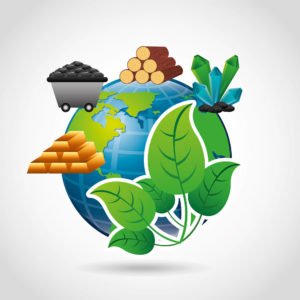
Types of Natural Resources
There are two types of natural resources – Renewable and Non-renewable.
Renewable resources are those that either will always be available or replenished at the same rate at which humans use them. Examples of the former include water, air, and sun, while the latter includes vegetative lands or trees. However, if not properly managed, these resources can also be depleted.
Non-renewable natural resources are derived from the Earth – directly from the mine. It takes millions of years to form these resources, which will take another million years to replace when exhausted. In this sense, they are limited – once these are used up, they are gone forever. There is nothing you can do.
Minerals and fossil fuels like oil and gas are examples of non-renewable resources.
Examples of Natural Resources
Let’s discuss in more detail a few natural resources that are essential to human existence.
Soil
Probably one of Earth’s most abundant natural resources, the soil is utilized directly and indirectly. Food production, manufacturing raw materials, and generating energy sources are a few things for which soil is helpful.
Water
An important natural resource that ensures the existence of life is water. Fresh water is a renewable natural resource, but it is from groundwater sources that the water you use comes. These sources are depleted faster than they can be recovered because of careless human activities.
Trees
It is a renewable natural resource that offers habitat to different species of plants and animals. They also help in reducing humidity levels and temperature. They are an essential source of oxygen and fresh air. Further, they provide help in different aspects of life, from construction to shelter and paper products, to name a few.
Minerals
Minerals that include iron, gold, silver, and copper are non-renewable natural resources. These are pretty demanding and expensive to extract.
Coal
Coal is another popular non-renewable resource that is a must for human life. For thousands of years, it has been the source of heat energy. It is a fossil fuel created with the help of coalification.
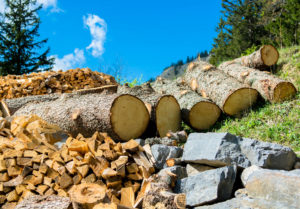
Threats to Natural Resources
Now that your memories of school lessons have been refreshed let’s talk about the major issue.
Around 4.5 billion years ago, Earth was formed, and since more than just a third of natural resources have been damaged by human existence. Thinking that they are present freely on Earth, people are overusing them, causing their depletion at an alarming rate.
Some major threats to natural resources are listed below:
Overpopulation
This is probably a massive threat to natural resources since the world population is increasing daily. In the United States, a baby is born every eight seconds. With more mouths to feed and more shelter for people, enlarged portions of forest and land are being cleared, destroying natural vegetation.
Demand for wood and paper products is also increasing, leading to more cutting of trees. The planet loses about 14.6 million hectares of forest yearly due to deforestation.
Besides, non-renewable natural resources such as fossil fuels are also facing threats because of over-exploitation to fulfill the demand of the rising population.
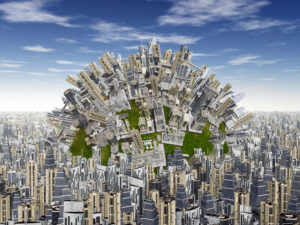
Environmental Pollution
Most natural resources are destroyed, and others are on the path of destruction because of the toxic substances and chemicals emitted from houses, industries, and intensive agricultural practices.
Environmental pollution includes air, water, and land pollution. Air pollution happens because some industrial practices and transport release several toxic gases into the air every day.
Water pollution harms the aquatic ecosystem and affects the quality of water people use for drinking and other things. Waste disposal in water is the primary cause of its pollution. Land pollution is mainly due to intensive farming and agricultural practices.
Pollution affects soil, water, and land chemical compositions, making them difficult to use and replenish.
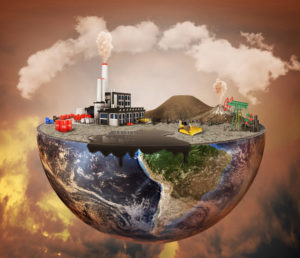
Climate Change
Earth is experiencing an unusual climate change that is harming its natural resources. And humans are the ones who are responsible for this change. The activities such as cutting down trees for more space and polluting air and water are causing climate change.
Global warming, a major problem due to climate change, is caused by air pollution, deforestation, and burning fossil fuels. Because of global warming, the glaciers are melting, and there could be a time when snow or winter is merely a dream.
That said, certain species that survive in a specific environment would be at risk of climate change, which will mess up their survival conditions.
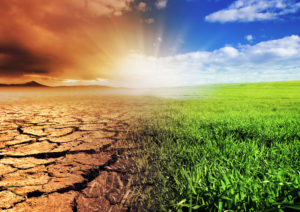
How to Save Natural Resources from Depletion?
There is only one home for humans – Earth.
It is time that, as individuals, you start reconsidering your actions. If you make some changes today, it will help save your home. Natural resources are already on the path to becoming depleted, but some hope remains. So, without delay, preventions need to be made.
Natural resource management refers to the sustainable utilization of renewable and non-renewable resources. It requires forethought, planning, and the people’s and government’s efforts. Many governments, including the US government, have a Department of natural resources that works towards their conservation.
However, combined efforts are what this cause needs. Here are some ways you can adopt to manage natural resources.
Use of Wind and Solar Energy
These are the perfect alternatives to burning fuels for energy that deplete the ozone layer and pollute the air. Wind water and solar energy are eco-friendly, renewable, and economical. Besides, since the sun’s the primary source of solar power, it is infinite.
Recycle
Recycling is a great practice to curb the depletion of natural resources. When a new product is made, it requires using natural resources. However, manufacturing fewer raw materials will lead to less waste, which helps decrease air and water pollution.
There would be many facilities around you that will allow you to recycle plastic and paper waste products.
Use less water
You must have heard numerous times to close off the faucet when brushing, take a short time in showers, preserve water while boiling food, etc. All these practices are imperative in today’s time when groundwater is limited for human use.
Plant more trees
Soil erosion is a significant problem that leads to the loss of fertile soil. Flowing water, hard rains, and strong winds cause it. Though water soil provides plants with nutrients, an excessive amount can cause problems. One way to fight soil erosion is to plant more trees. It will help in stabilizing the soil and keeping it in place.
Composting
It is a great way to save natural resources while improving your home garden. Composting is a natural process that involves recycling organic matter like food scraps and leaves into beneficial fertilizers that can enrich plants and soil. It is a simple practice that helps reduce waste and encourages sustainability.
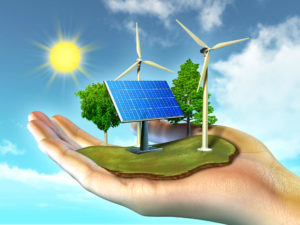
Expert Insights From Our Solar Panel Installers About Examples of Natural Resources
Natural resources are the backbone of our existence. Understanding the difference between renewable and non-renewable resources is crucial for sustainable living and ensuring we don’t exhaust these essential materials.
Senior Solar Technician
Conservation efforts, such as using renewable energy sources like wind and solar power, are vital in protecting our natural resources. These practices not only reduce our carbon footprint but also help in preserving these resources for future generations.
Lead Solar Installer
Recycling, water conservation, and planting trees are simple yet effective ways to manage natural resources. Every small effort counts towards making a significant impact in preserving our planet’s resources.
Solar Energy Consultant
The Bottom Line
In this article, you have understood the meaning of natural resources, their types, and examples. You have also learned that these resources are not in a safe place. They are at significant risk because of human activities.
Nature, since the existence of the planet, has supported human life. The current state of natural resources is due to overuse by humans.
For a better future, steps need to be taken now.
The steps to conserve natural resources are insignificant and will not hurt your pocket. They are easy to follow and things you can do without too much worry, such as turning off taps and switches when not in use, using renewable energy sources, recycling, and reusing.
As humans, it is time for us to nurture nature.
About the Author
Solar Panels Network USA stands at the forefront of solar energy solutions, driven by a team of seasoned solar engineers and energy consultants. With over decades of experience in delivering high-quality solar installations and maintenance, we are committed to promoting sustainable energy through customer-centric, tailored solutions. Our articles reflect this commitment, crafted collaboratively by experts to provide accurate, up-to-date insights into solar technology, ensuring our readers are well-informed and empowered in their solar energy decisions.

